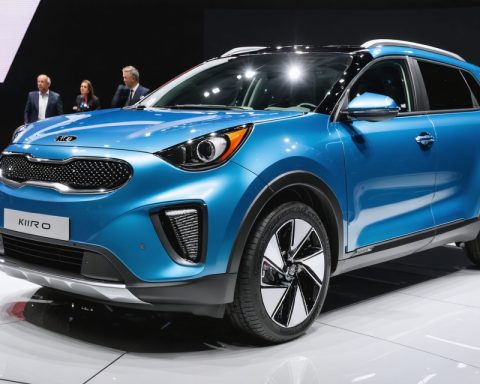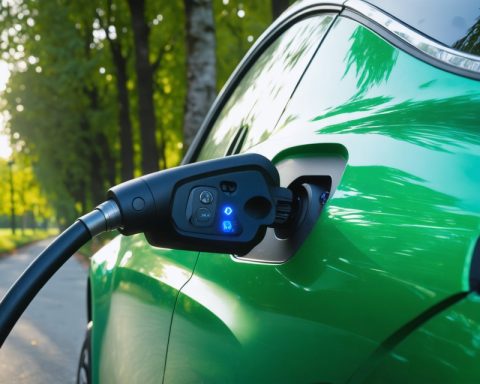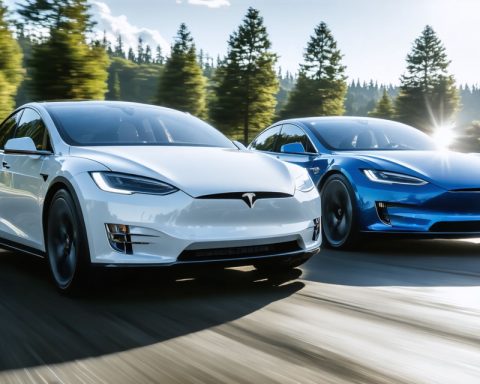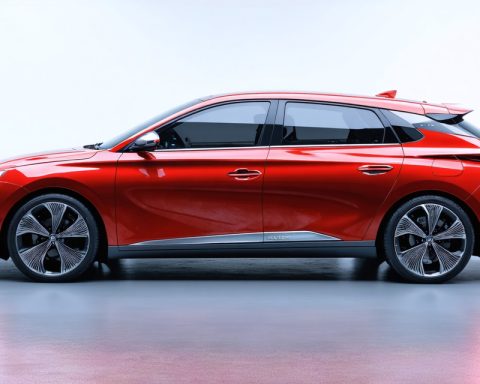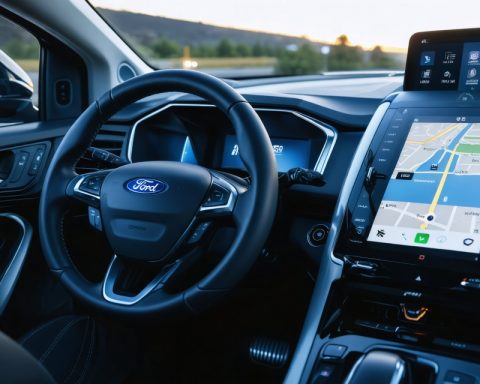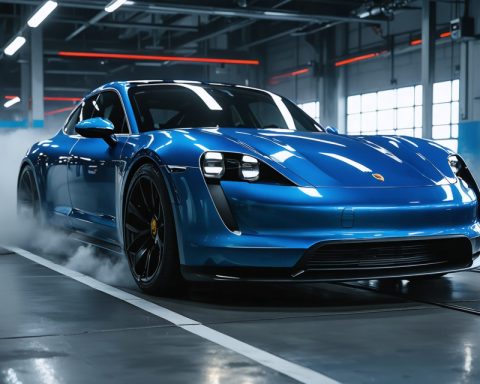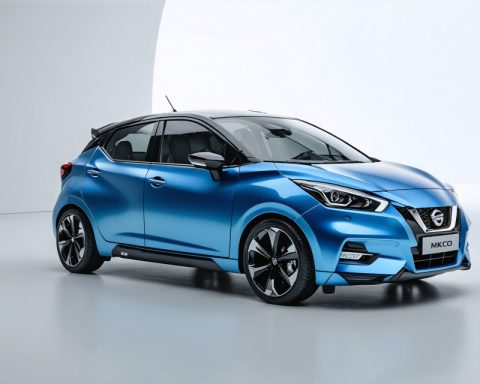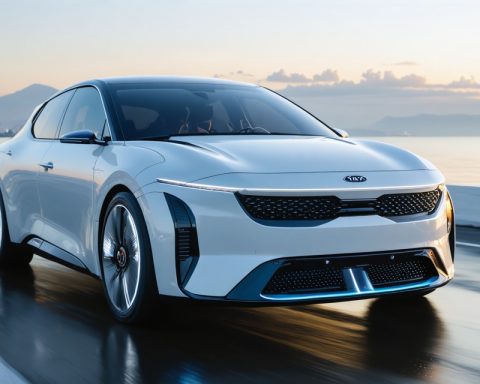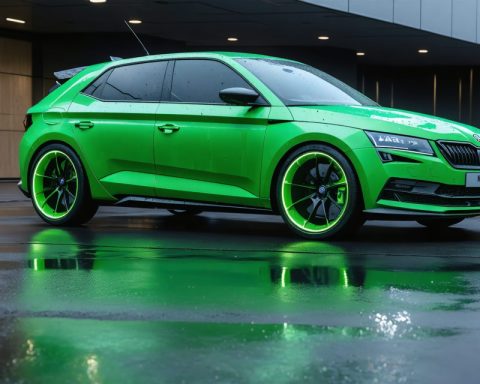- Regenerative braking allows electric vehicles (EVs) to capture and reuse kinetic energy, extending the car’s range with every brake application.
- EVs, like the Tesla Model 3 and Nissan Leaf, convert what is typically wasted energy into a resource, enhancing driving efficiency.
- This technology transforms urban commuting, offering a quieter and more serene driving experience compared to traditional vehicles.
- The environmental benefits of regenerative braking include reduced demand on power grids and decreased emissions, contributing to a sustainable future.
- Urban planners and communities benefit from quieter streets and improved air quality due to the adoption of EVs and regenerative braking.
- The widespread use of regenerative braking in EVs marks a significant step toward efficient, intelligent, and environmentally-responsible urban transportation.
Electric vehicles (EVs) have quietly heralded a transportation revolution, merging environmental consciousness with cutting-edge technology. While their clean energy usage often steals the spotlight, an equally compelling feature is transforming urban commutes: regenerative braking.
Imagine bustling city streets, alive with the hum of engines and the myriad colors of tail lights reflecting off rainy asphalt. In this vibrant dance of movement, EVs glide more silently but with profound impact, harnessing what others waste—energy.
Regenerative braking redefines how vehicles interact with their environment. Instead of dissipating kinetic energy as heat, as conventional brakes do, EVs like the Tesla Model 3 or Nissan Leaf cleverly capture this energy and funnel it back to the battery. Every stoplight becomes an opportunity, as each press of the brake subtly extends the car’s range.
The charm lies not just in efficiency but in driving dynamics. Urban stop-and-go traffic, notorious for guzzling fuel and fraying nerves, now transforms into an opportunity for serenity and savings. With regen braking, an EV driver’s dashboard might display a surprising range increase, almost like finding extra cash in an old coat pocket. This technology doesn’t just recuperate energy; it enhances the harmony between drives, making each errand and commute more relaxed and resourceful.
Moreover, regenerative braking contributes to quieter streets. Traditional brakes squeal and grind, yet EV city driving becomes a more tranquil experience. This shift has implications for urban planners and communities striving for cleaner, quieter neighborhoods.
Beyond individual benefits, the broader impact on sustainability cannot be overstated. Less energy consumption means less demand on power grids, and fewer emissions from fueling power plants. Each everyday journey becomes part of a collective effort toward a more sustainable future.
As cities grow more crowded and air quality concerns rise, embracing innovations like regenerative braking isn’t solely an option; it’s imperative. With EVs, every deceleration champions progress and responsibility. Next time you watch an EV effortlessly blend into the ebb and flow of city traffic, remember—it’s not just getting from A to B but leading us toward a cleaner tomorrow.
The future of city driving is here, and it’s efficient, intelligent, and regenerative. Step into an EV, and you’re not just taking a ride; you’re joining a movement.
The Hidden Benefits of Regenerative Braking in Electric Vehicles
Introduction
As the world drives toward a more sustainable future, electric vehicles (EVs) have become a defining element of this transformation. While clean energy usage is often highlighted, the implementation of regenerative braking in EVs presents fascinating advancements in technology and efficiency, offering distinct advantages beyond what meets the eye.
How Regenerative Braking Works
Regenerative braking systems convert the vehicle’s kinetic energy into electric energy during deceleration, subsequently storing it in the battery. Unlike conventional braking systems, which waste kinetic energy as heat, regenerative braking recycles it, enhancing the vehicle’s range and energy efficiency.
Evolution and Impact of Regenerative Braking
– Reduced Wear and Tear: EVs experience less wear on conventional brake parts, reducing maintenance costs and increasing the longevity of brake components. This benefit results in fewer brake replacements and less environmental impact associated with manufacturing and disposing of brake pads.
– Driving Efficiency: Regenerative braking boosts overall efficiency by up to 20%. In urban settings, where stop-and-go traffic prevails, this technology significantly extends the range of EVs, making them remarkably practical for city commutes.
– Enhanced Driving Experience: The system offers smoother deceleration and less reliance on friction brakes, transforming urban driving into a tranquil experience that minimizes stress and enhances passenger comfort.
Real-World Use Cases
Regenerative braking finds substantial use in public transportation as well. For instance, many cities employ electric buses equipped with regenerative braking, reducing operational costs and contributing to cleaner air.
Market Forecasts and Industry Trends
The global regenerative braking market is expected to surge, driven by increasing demand for EVs and hybrid vehicles. Forecasts suggest a growing trend in automotive innovations that integrate advanced regenerative braking technologies.
Controversies and Limitations
While regenerative braking is advantageous, some drivers find it takes time to adjust to the feel of “single-pedal driving,” where the lift-off from the accelerator slows the car quicker than expected. Additionally, the system’s effectiveness can vary based on speed and battery charge levels.
Pros and Cons Overview
– Pros: Energy efficiency, reduced brake wear, extended range, potential cost savings.
– Cons: Adjustment period for drivers, variable effectiveness based on conditions.
Insights and Predictions
As EV technology evolves, regenerative braking systems are likely to become more sophisticated, offering greater energy recovery and further integrating with smart grid technologies. Research and development in this area may result in even more intuitive systems that could revolutionize how vehicles use energy and interact with urban infrastructure.
Actionable Recommendations and Quick Tips
– Embrace Eco-Driving Techniques: By utilizing regenerative braking effectively, drivers can maximize the energy recovery and thereby extend the range of their EVs.
– Stay Informed: As technology advances, keeping abreast of updates in regenerative braking systems will enable you to optimize your vehicle’s performance.
For more information on electric vehicles and their innovative features, visit Tesla and Nissan.
By understanding and leveraging advances like regenerative braking, you’re not just riding, but actively participating in the movement towards a sustainable future.

